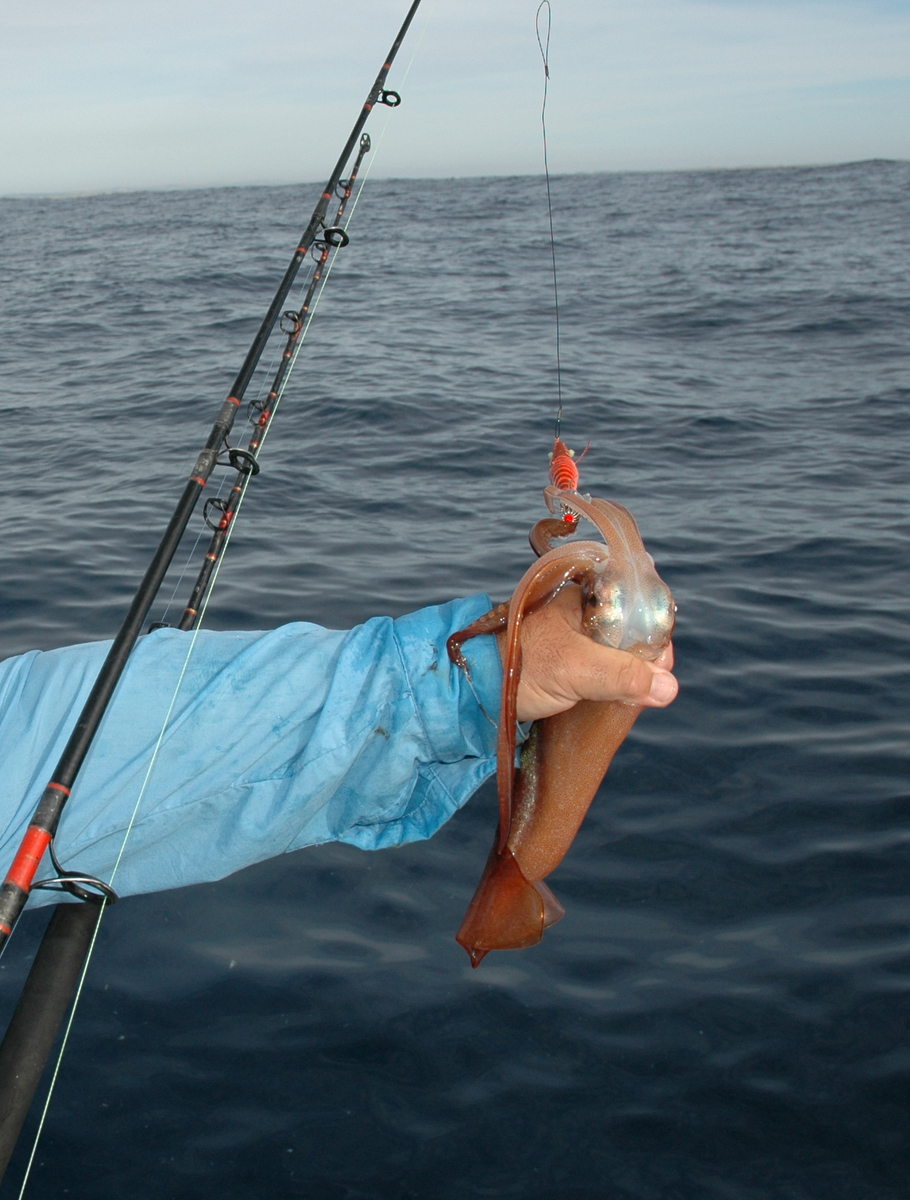THE SAVAGE little arrow squid is about to swim our way, as STEVE COOPER reports:
PHOBIAS are not rare in our society. The most publicised is arachnophobia – a fear of spiders and former Prime Minister John Howard played on the xenophobic nature of many voters when he turned illegal immigration (boat people) into an election winner.
Everyone is unnerved by something. In my case it is arrow squid. When you spend many hours on the water you get to witness some magnificent sights. I’ve seen a four-metre long white shark alongside the boat chewing on snapper. Moreover, there was the day when I was wading waist deep off the north end of Fraser Island in Queensland when a large shark made a kill within range of a good fly cast.

Such events can be unsettling, but nothing consistently unsettles me as much as the cannibals of the seas: arrow squid. Also known as Gould’s squid, arrows have a piranha-like savagery that makes Thomas Harris’ famed character, “Hannibal the cannibal Lecter,” look like the Patron Saint of takeaways.
Giant squid are the stuff of legends. The famed Architeuthis (Ark-i-tooth-is), which is the scientific name for giant squid, is reputed to grow to 18 metres (60 feet) long, and weigh over a tonne. By comparison, arrow squid are even smaller on average than the more sought after calamari squid of our bays.
In fact, the Australian Seafood Handbook published by the CSIRO states that calamari can grow to 55cm mantle length and weigh more than 4kg, compared with 40cm mantle length and 1.6kg for adult female arrow squid.
The good news for anglers fishing offshore is that arrow squid are due to show. Every year in January, huge numbers of arrow squid show up in Bass Strait. Squid are a key link in the offshore food chain; the species that most large predatory fish feed on.

When the annual migration of arrows is underway, commercial squid boats, illuminated with bright lights along their decks, will sometimes be seen fishing for them offshore at night.
For anglers wanting fresh bait or a feed, arrows make life easy. The difference between an arrow squid and the tastier calamari are distinctive arrowhead-shaped tail flukes.
Most people fishing for squid will work prawn imitation jigs, but while arrows will take jigs, they will also attack lures. When barracouta schools are running offshore, many anglers use their sonar to find the schools, then jig lures to catch them. Chances are when you do this you are just as likely to come up with a squid.
As well as being attracted to the noise of a fish struggling on a lure, arrows are also attracted to berley trails, especially those set by the anglers chasing sharks along the 70-metre line.
If you want to avoid the expense of buying a jig, simply concentrate on jigging with lures. Like most marine creatures, squid are attracted to berley trails and when they are hungry, you will soon get your 10-bag limit.

head pointing away from you unless you want an ink bath.
If you haven’t caught arrows before take care. The parrot-like beak extends farther than that on the calamari and can give a nasty nip. And with calamari you get used to simply reaching over the side, grabbing the squid by the back of the neck, and pointing it away from the boat until it has expelled its ink.
When you are offshore, reaching over the side of the boat and dipping your hand into a berley trail to grab a squid isn’t recommended. If you are drifting with a berley trail you may have a mako shark hanging around down deep; makos love to eat struggling fish – or squid for that matter. The safe way is to use a landing net, guide the squid into it, and always avoid pointing the squid inboard, unless you want an ink bath.

STEVE COOPER won two Walkley Awards for investigative journalism but his great love is fishing and he is renowned as one of Australia’s foremost writers and broadcasters on the subject.



Discussion about this post